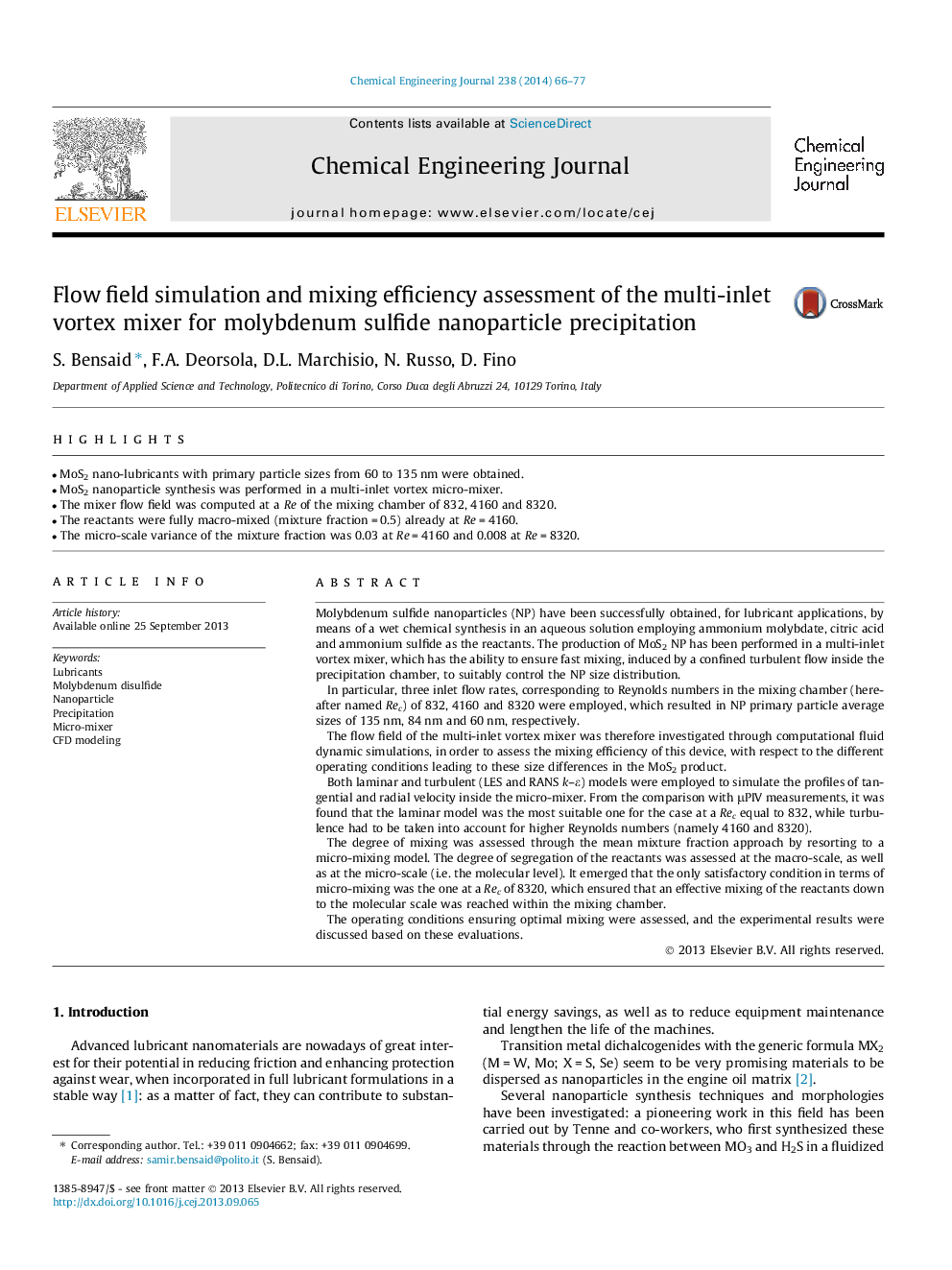| کد مقاله | کد نشریه | سال انتشار | مقاله انگلیسی | نسخه تمام متن |
|---|---|---|---|---|
| 148038 | 456404 | 2014 | 12 صفحه PDF | دانلود رایگان |
• MoS2 nano-lubricants with primary particle sizes from 60 to 135 nm were obtained.
• MoS2 nanoparticle synthesis was performed in a multi-inlet vortex micro-mixer.
• The mixer flow field was computed at a Re of the mixing chamber of 832, 4160 and 8320.
• The reactants were fully macro-mixed (mixture fraction = 0.5) already at Re = 4160.
• The micro-scale variance of the mixture fraction was 0.03 at Re = 4160 and 0.008 at Re = 8320.
Molybdenum sulfide nanoparticles (NP) have been successfully obtained, for lubricant applications, by means of a wet chemical synthesis in an aqueous solution employing ammonium molybdate, citric acid and ammonium sulfide as the reactants. The production of MoS2 NP has been performed in a multi-inlet vortex mixer, which has the ability to ensure fast mixing, induced by a confined turbulent flow inside the precipitation chamber, to suitably control the NP size distribution.In particular, three inlet flow rates, corresponding to Reynolds numbers in the mixing chamber (hereafter named Rec) of 832, 4160 and 8320 were employed, which resulted in NP primary particle average sizes of 135 nm, 84 nm and 60 nm, respectively.The flow field of the multi-inlet vortex mixer was therefore investigated through computational fluid dynamic simulations, in order to assess the mixing efficiency of this device, with respect to the different operating conditions leading to these size differences in the MoS2 product.Both laminar and turbulent (LES and RANS k–ε) models were employed to simulate the profiles of tangential and radial velocity inside the micro-mixer. From the comparison with μPIV measurements, it was found that the laminar model was the most suitable one for the case at a Rec equal to 832, while turbulence had to be taken into account for higher Reynolds numbers (namely 4160 and 8320).The degree of mixing was assessed through the mean mixture fraction approach by resorting to a micro-mixing model. The degree of segregation of the reactants was assessed at the macro-scale, as well as at the micro-scale (i.e. the molecular level). It emerged that the only satisfactory condition in terms of micro-mixing was the one at a Rec of 8320, which ensured that an effective mixing of the reactants down to the molecular scale was reached within the mixing chamber.The operating conditions ensuring optimal mixing were assessed, and the experimental results were discussed based on these evaluations.
Journal: Chemical Engineering Journal - Volume 238, 15 February 2014, Pages 66–77
